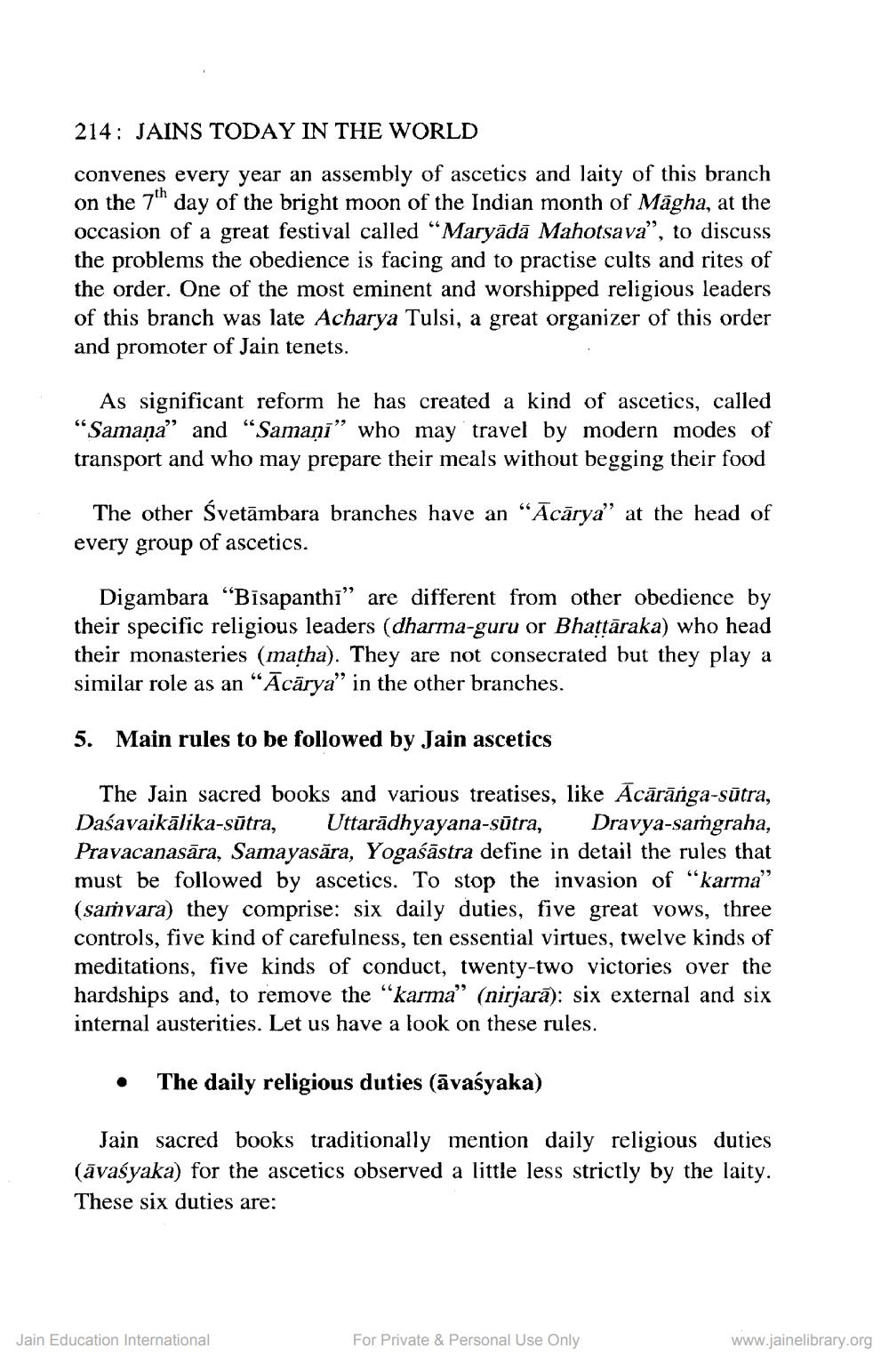________________
214: JAINS TODAY IN THE WORLD
convenes every year an assembly of ascetics and laity of this branch on the 7th day of the bright moon of the Indian month of Magha, at the occasion of a great festival called “Maryādā Mahotsava", to discuss the problems the obedience is facing and to practise cults and rites of the order. One of the most eminent and worshipped religious leaders of this branch was late Acharya Tulsi, a great organizer of this order and promoter of Jain tenets.
As significant reform he has created a kind of ascetics, called "Samana" and "Samaṇī” who may travel by modern modes of transport and who may prepare their meals without begging their food
The other Śvetambara branches have an "Acarya" at the head of every group of ascetics.
Digambara "Bisapanthi" are different from other obedience by their specific religious leaders (dharma-guru or Bhaṭṭāraka) who head their monasteries (matha). They are not consecrated but they play a similar role as an "Acārya" in the other branches.
5. Main rules to be followed by Jain ascetics
The Jain sacred books and various treatises, like Ācārānga-sūtra, Daśavaikālika-sūtra, Uttaradhyayana-sūtra, Dravya-saṁgraha, Pravacanasāra, Samayasāra, Yogaśāstra define in detail the rules that must be followed by ascetics. To stop the invasion of "karma” (samvara) they comprise: six daily duties, five great vows, three controls, five kind of carefulness, ten essential virtues, twelve kinds of meditations, five kinds of conduct, twenty-two victories over the hardships and, to remove the "karma” (nirjarā): six external and six internal austerities. Let us have a look on these rules.
• The daily religious duties (āvaśyaka)
Jain sacred books traditionally mention daily religious duties (āvaśyaka) for the ascetics observed a little less strictly by the laity. These six duties are:
Jain Education International
For Private & Personal Use Only
www.jainelibrary.org




